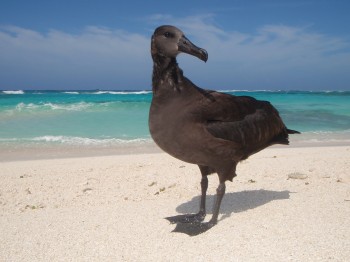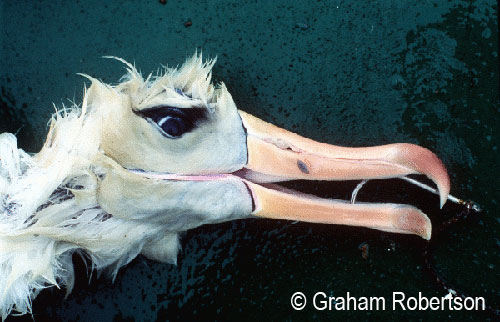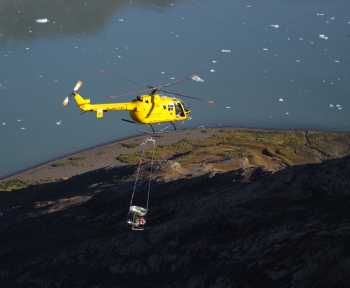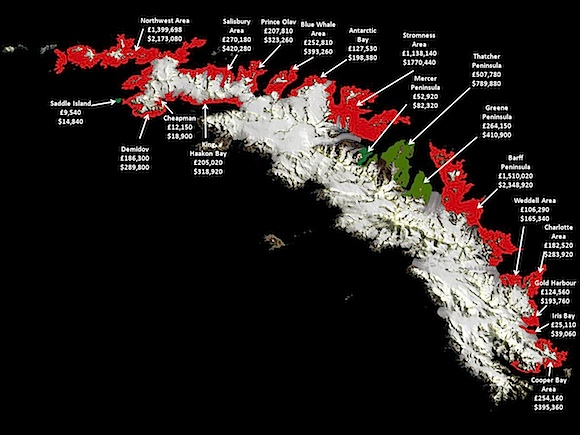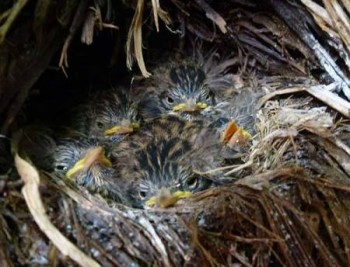ACAP Latest News has previously reported on plans by Pacific Rim Conservation to establish a new colony of Laysan Albatrosses Phoebastria immutabilis on the Hawaiian island of Oahu by taking advantage of eggs removed from a naval facility on the nearby island of Kauai (click here).
Forty-three eggs from Kauai’s Pacific Missile Range Facility Barking Sands (PMRF) were flown to Oahu in December last year and placed in an artificial incubator. Once those eggs that were fertile had hatched the chicks were temporarily fostered under adults in the Kaena Point National Wildlife Refuge on Oahu (click here).
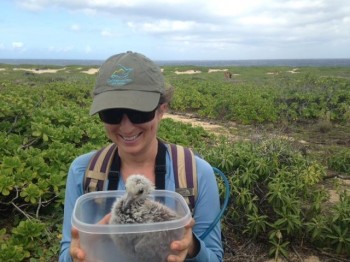
A translocated chick gets weighed while being fostered at Kaena Point
Pacific Rim Conservation now reports:
“After a month with foster parents at Kaena Point, the translocated chicks are now at [the] James Campbell National Wildlife Refuge and getting used to their new 'habitat'. They are being housed in a carport for two weeks while they transition from being brooded by their parents to being able to maintain their body temperature on their own. The tubs you see them in are to ensure they don't wander around into another chicks 'territory', and to help keep everything clean. Kind of like an actual nest cup.”
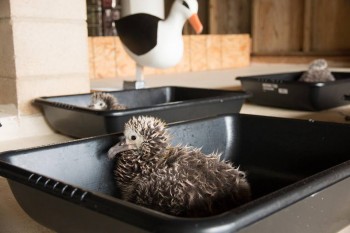
Translocated chicks on site in the carport
Next stage will be to move the chicks into the open and continue to feed them by hand until they fledge. ACAP Latest News will keep you posted as the news comes in.
The translocation project is being supported by the U.S. Fish and Wildlife Service, American Bird Conservancy, US Navy, the National Fish and Wildlife Foundation and the David and Lucile Packard Foundation.
With thanks to Lindsay Young, Pacific Rim Conservation for information and photographs.
John Cooper, ACAP Information Officer, 02 March 2015

 English
English  Français
Français  Español
Español 